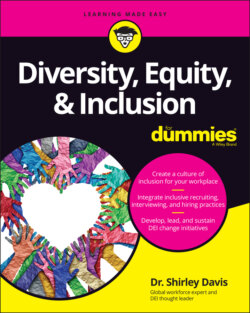Читать книгу Diversity, Equity & Inclusion For Dummies - Dr. Shirley Davis - Страница 43
Racial and ethnic diversity
ОглавлениеRacial minorities are the primary demographic engine of future growth in the United States, countering an aging, and soon-to-be declining white population. The 2020 census data projected that the nation will become “minority white” in 2045. During that year, whites will comprise 49.7 percent of the population in contrast to 24.6 percent for Hispanics, 13.1 percent for blacks, 7.9 percent for Asians, and 3.8 percent for multiracial populations. Among the minority populations, the greatest growth is projected for multiracial populations, Asians and Hispanics with 2018–2060 growth rates of 176, 93, and 86 percent, respectively. The projected growth rate for blacks is 34 percent. The new census projections also indicate that, for youth under 18 (the post-millennial population), minorities will outnumber whites in 2020.
Racial diversity is growing in many nations. According to a recent survey conducted by Pew Research Center, approximately 69 percent of people surveyed across 27 nations said their respective nations have grown more diverse over the last 20 years. Close to half of survey respondents say that they favor a more racially diverse nation. Even though racial diversity is still growing in some nations, other nations, such as Trinidad and Tobago, already have a very diverse population. Groups in this country include East Indians, Afro-Trinidadians, and mixed races. Belize is another country with racial diversity, with its population made up of Mestizos, Kriols, Mayans, East Indians, and other races.
Guyana is also racially diverse. Races that reside in this nation include East Indians, blacks, mixed races, and Chinese.
Other racially diverse countries throughout the world include:
Brazil
Canada
Colombia
Panama
Suriname
United States
In the United States, the most diverse states are California, Texas, Florida, Hawaii, New Jersey, and New York.
While many companies increasingly understand the value of recruiting and retaining diverse talent, many companies fail to recognize the benefits of having a more racially and ethnically diverse workforce. Factors such as prejudice and stereotypes toward certain racial or ethnic groups, whether conscious or unconscious, are still too common. A number of global studies continue to tout the benefits that a more ethnically diverse workforce brings including better returns on sales, more innovative products and services, and the ability to meet the needs of more diverse customers and clients.
